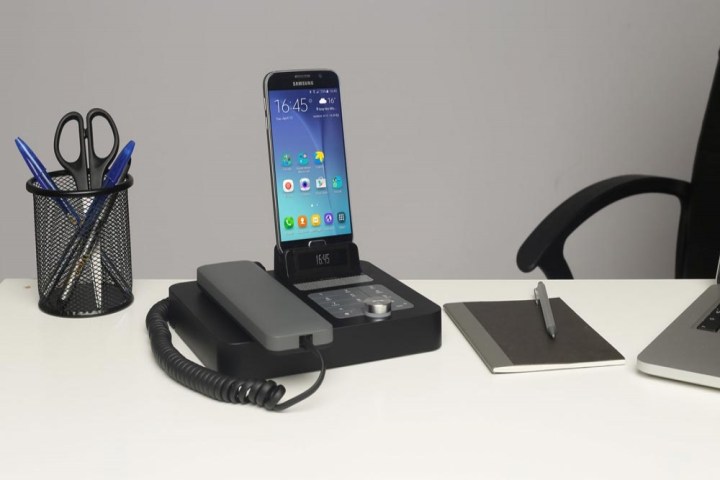
Invoxia’s NVX 200 “offers the best of unified communication” with the “comfort” and “style” of a desk phone, according to the company’s press release. It takes calls in hands-free mode just like any old smartphone. Or, if you’d like to feel especially anchored to your desk, you can switch to the NX 200’s handset.
The benefits of the NVX ostensibly include high quality sound, conferences of up to five people, apps like Skype and Hangouts, and programmable speed dial keys. But those aren’t exactly novel. AT&T, Verizon, Sprint, T-Mobile, and others have adopted or are in the process of adopting voice-over-LTE — VoLTE, for short — that sound noticeably clearer and better than your average landline. The iPhone and major mobile networks have supported five-way conference calling as far back as 2008. And it goes without saying that Skype and speed dial have been smartphone hallmarks for nearly a decade.
There’s potentially something of real value to Invoxia’s Vivo Acoustic software, which uses a combination of far-field microphones and software to pick up speech from up to 16 feet away. And there’s the the NVX 200’s standalone mode, which enables it to function as a phone without the need for Wi-Fi or Ethernet connectivity.
But it’s hard to argue any of those features justify the NX 200’s $250 asking price.
“In a time when Slack, Workplace by Facebook, and other unified communication networks triumph, the way companies communicate is evolving rapidly towards more mobility,” an Invoxia spokesperson said. “An entire new ecosystem needs to be created and peripheral devices should evolve accordingly to optimize unified communication.”

The firm may have a point about “ecosystems” better suited to modern workplaces, and those may well be coming. Samsung, for example, is reportedly developing a smartphone dock that switches to a desktop interface when plugged into a monitor. Motorola’s Moto Z accessory lineup, meanwhile, includes a pico projector that can throw video calls, text messages, and PowerPoint presentations onto any wall.
The NX 200, then, is ultimately a solution in search of a problem. Its appeal is predicated upon its familiarity, not its usefulness, and we’d have to conclude that there are much better ways to spend $250.
But if the marketing’s nostalgia moves you, the NX 200 is available now from Amazon and other internet retailers.



